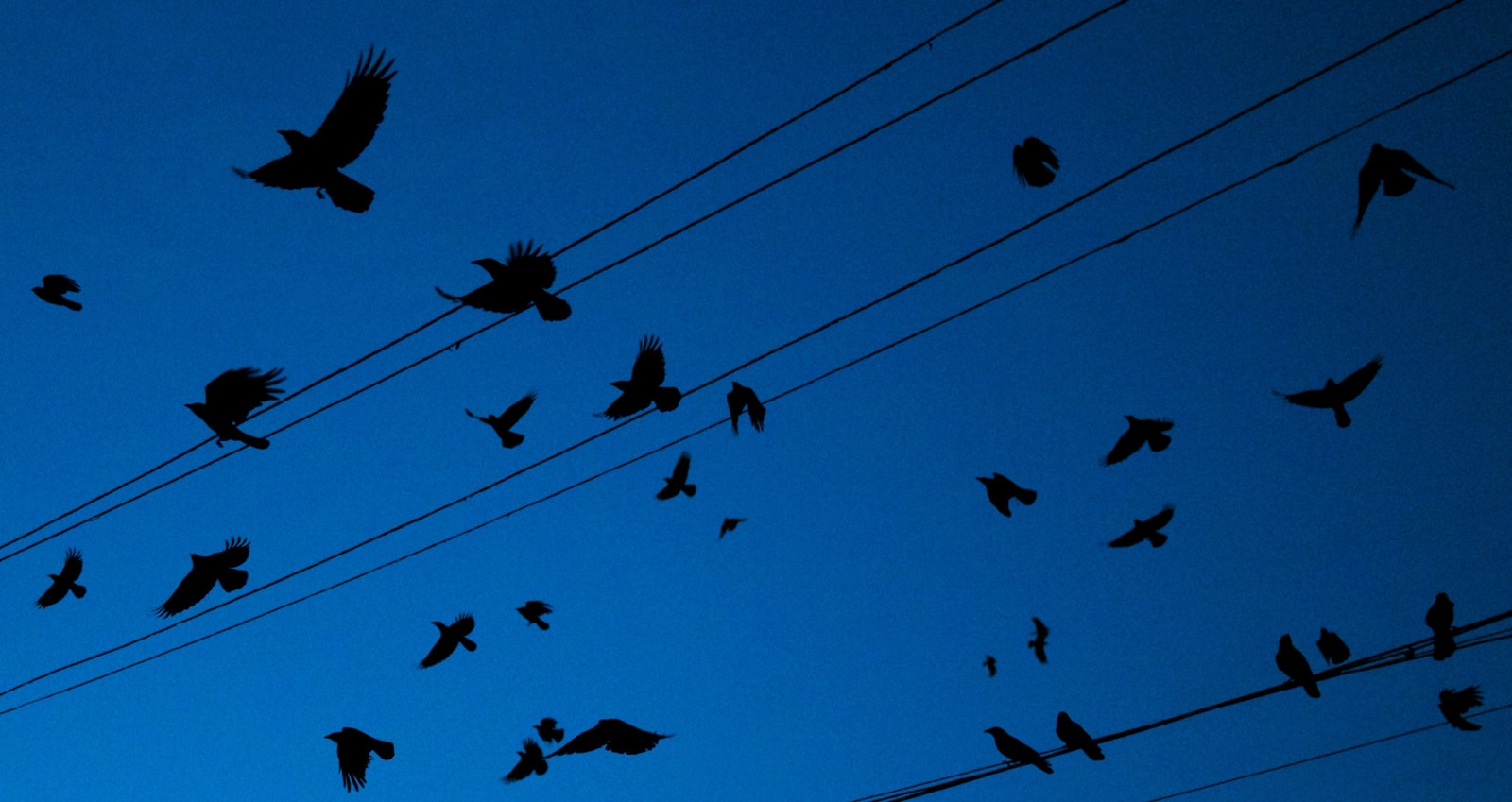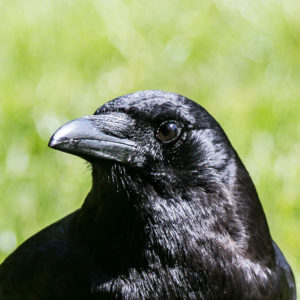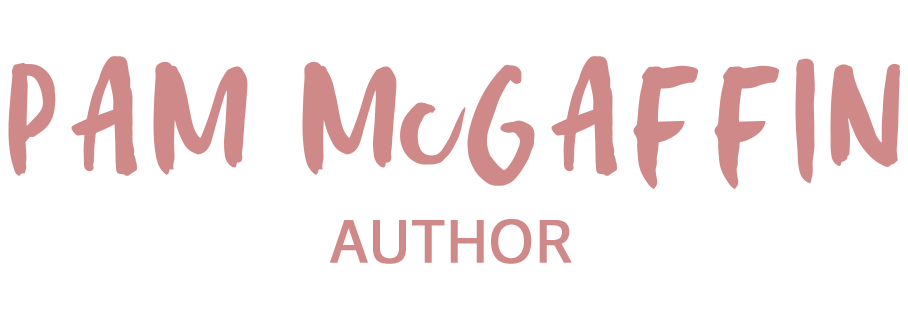Counting crows and getting inspired

Crows leaving downtown Bothell, WA, for their roosting grounds at UW Bothell.
On a recent evening blessed with blue skies and warm temperatures, my husband, Mark, and I took a field trip north to Bothell, Washington.
We weren’t going to the University of Washington branch campus to scope out a college option for our older son. (We’d already done that. Casey has chosen Western Washington University in Bellingham. Go Vikings! But UW-Bothell was a very close, and impressive, second. Go Huskies!)
On this particular Tuesday, we went there to walk our dog, Ben, and to look at crows – mostly the latter.
When we got there, about an hour before dusk, the campus was quiet. Most of the human activity seemed to be centered on the sports fields, where students were winding down the day with spirited games of volleyball and flag football.
I suspect Mark would have been content to watch the games. Ben wanted to chase rabbits. He’d seen  one and was on high alert. My heart, though, was set on seeing crows, and there were precious few to be seen.
one and was on high alert. My heart, though, was set on seeing crows, and there were precious few to be seen.
We walked past the sports fields and into a restored wetlands area thick with alder and cottonwood trees. This was where we were told it would happen. We’d seen the crows’ calling cards on the windows of the nearby Activities and Recreation Building, but the actual crows seemed to be taking their time in arriving.
I was expecting a sudden flood of black silhouettes, filling the sky like a proper murder, not this disappointing dribble of three birds here, four birds there.
Once inside the wetlands, we stopped to watch a crow above us pump its chest and caw, as if it, too, was impatient for company.
We were just about to give up and go home when we started to see more and larger groups of birds coming from all directions. What was it about this particular patch of suburban woods that attracted them? Bounded by the campus on one side, a freeway interchange on the other, it didn’t strike me as particularly special, but then I’m not a crow.
(Turns out, the 58-acre Northcreek Wetland is indeed special. It’s one of the largest and most complex floodplain restorations in the state. And for the crows, it’s a safe haven. )
Finally, about 9:30 p.m., once the skies had darkened to violet, the air came briefly alive with their calls and bodies, as well as a honking Canada goose or two. The convergence reminded Mark of the flying-monkey scene in The Wizard of Oz movie.
The comparison isn’t far off. Because of their big (relative to body size) brains, crows are more like small flying monkeys than birds, according to avian researcher John Marzluff, the UW professor of wildlife sciences who led the famous crow-banding/mask experiments starting in 2006.
So here we were in the middle of a roost at roosting time. And, for about 47 seconds, it was pretty damn exciting, and a wee bit unnerving. Crows figure prominently in Alfred Hitchcock’s horror film, The Birds.
These crows ignored us, of course. Mark and I left impressed, but a couple of students we spoke with told us this little spring flurry was nothing. To get the real Hitchcock-ian show, we would need to come back in the fall.
Maybe by then I’ll have a good start on my second novel. I’m not going to spill the beans here and risk jinxing myself, but I’ll say that crows and corvids will play a starring role.
To illustrate this post, I tried to get a video of the murder-lite on my iPhone. No luck. It was too dark. So here’s a much better YouTube video taken by Joshua Trujillo for Seattlepi.com. Enjoy.
Photo credit (crows): Old Mister Crow
Photo credit (single crow): Birdy206

